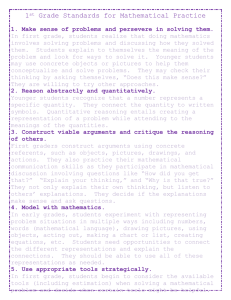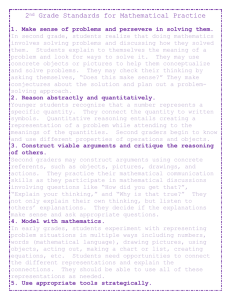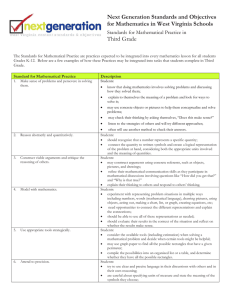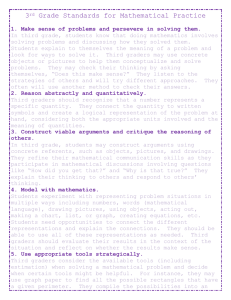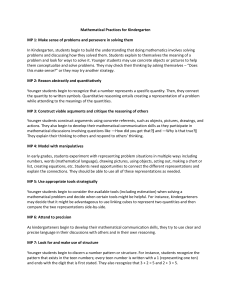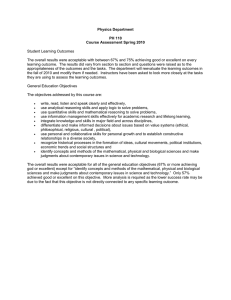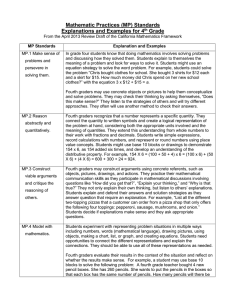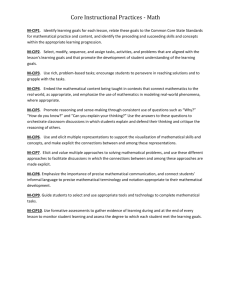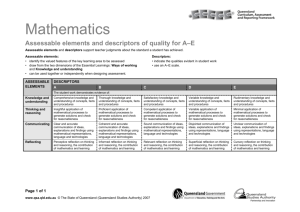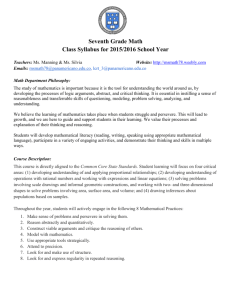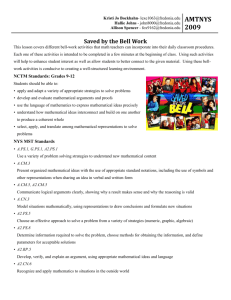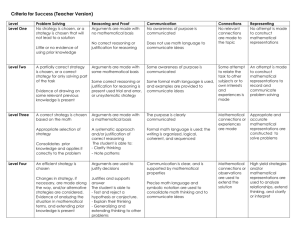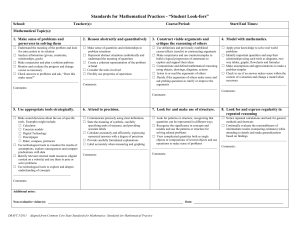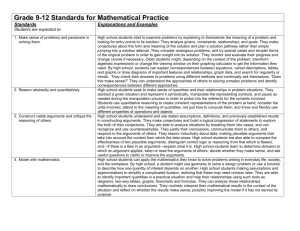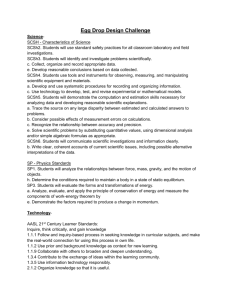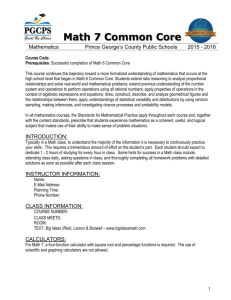Mathematical Practice - Lewiston Independent School District #1
advertisement
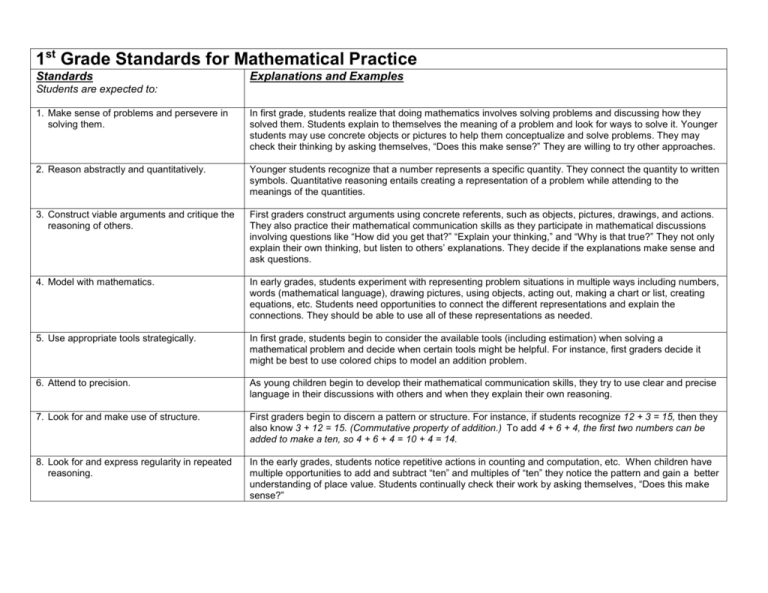
1st Grade Standards for Mathematical Practice Standards Explanations and Examples Students are expected to: 1. Make sense of problems and persevere in solving them. In first grade, students realize that doing mathematics involves solving problems and discussing how they solved them. Students explain to themselves the meaning of a problem and look for ways to solve it. Younger students may use concrete objects or pictures to help them conceptualize and solve problems. They may check their thinking by asking themselves, “Does this make sense?” They are willing to try other approaches. 2. Reason abstractly and quantitatively. Younger students recognize that a number represents a specific quantity. They connect the quantity to written symbols. Quantitative reasoning entails creating a representation of a problem while attending to the meanings of the quantities. 3. Construct viable arguments and critique the reasoning of others. First graders construct arguments using concrete referents, such as objects, pictures, drawings, and actions. They also practice their mathematical communication skills as they participate in mathematical discussions involving questions like “How did you get that?” “Explain your thinking,” and “Why is that true?” They not only explain their own thinking, but listen to others’ explanations. They decide if the explanations make sense and ask questions. 4. Model with mathematics. In early grades, students experiment with representing problem situations in multiple ways including numbers, words (mathematical language), drawing pictures, using objects, acting out, making a chart or list, creating equations, etc. Students need opportunities to connect the different representations and explain the connections. They should be able to use all of these representations as needed. 5. Use appropriate tools strategically. In first grade, students begin to consider the available tools (including estimation) when solving a mathematical problem and decide when certain tools might be helpful. For instance, first graders decide it might be best to use colored chips to model an addition problem. 6. Attend to precision. As young children begin to develop their mathematical communication skills, they try to use clear and precise language in their discussions with others and when they explain their own reasoning. 7. Look for and make use of structure. First graders begin to discern a pattern or structure. For instance, if students recognize 12 + 3 = 15, then they also know 3 + 12 = 15. (Commutative property of addition.) To add 4 + 6 + 4, the first two numbers can be added to make a ten, so 4 + 6 + 4 = 10 + 4 = 14. 8. Look for and express regularity in repeated reasoning. In the early grades, students notice repetitive actions in counting and computation, etc. When children have multiple opportunities to add and subtract “ten” and multiples of “ten” they notice the pattern and gain a better understanding of place value. Students continually check their work by asking themselves, “Does this make sense?”
